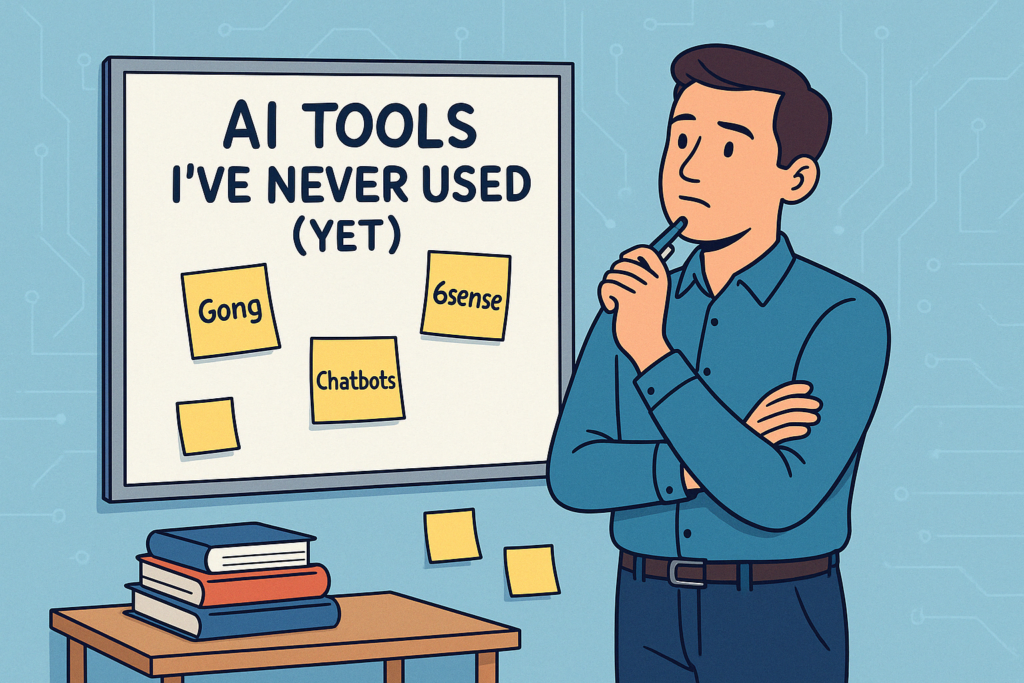
Let me start with full transparency—I’ve never used tools like Gong, 6sense, or AI-powered chatbots in my day-to-day sales work.
Not because I wasn’t interested, but because my career path never demanded it. I’ve been fortunate to lead sales and business teams across Southeast Asia, working on exciting projects in issuing, acquiring, loyalty, and alternative payments. Yet, until now, AI hasn’t been a core part of my sales approach.
But that’s changing.
I’m not writing this as an AI expert—far from it. Instead, I’m sharing my early thoughts as someone eager to learn, hoping this might resonate with fellow leaders who are also just starting to explore AI’s potential in sales.
1. I Started with Questions, Not Tools
There’s no shortage of flashy platforms and software out there. But before diving into demos or buzzwords, I took a step back and asked: What sales challenges am I actually trying to solve?
- Could we qualify leads more effectively?
- Are we missing subtle buying signals in conversations?
- Could structured insights help us coach our team better?
Only after clarifying the why did I begin exploring which tools might help. For instance, I learned that Gong isn’t just a call recorder—it uncovers insights across hundreds of conversations. 6sense can identify accounts actively researching solutions before they even reach out. I’m still wrapping my head around these concepts, but the possibilities are exciting.
2. I’m Not Mastering the Tech—Just the Benefits
I’ll be honest: I don’t understand how these tools work under the hood. I can’t explain the algorithms. But I do want to grasp how they fit into real-world sales.
Right now, my mindset is simple:
→ What insights can these tools provide that I don’t already have?
→ How can they help my team sell smarter, faster, or more effectively?
→ Can they free up time so we focus less on admin and more on strategy?
I don’t need to be fluent in AI—just in how it benefits my business.
3. I Started Talking to the Right People (Finally!)
Turns out, many people in organizations are already experimenting with AI—RevOps teams, sales enablement specialists, even marketers. Once I started asking around, I realized I didn’t have to figure this out alone.
I also learned that starting small—like piloting a tool with one region or a single sales stage—is completely okay. Not everything has to be a full-scale digital transformation from Day 1.
4. I Gave Myself Permission to Be a Learner Again
This has been the most rewarding part.
Once I let go of the pressure to “know it all,” I rediscovered the joy of learning. Now, I:
- Follow insightful sales and AI voices on LinkedIn
- Read newsletters and blogs from sales tech communities
- Watch short webinars with zero expectations—just curiosity
I even set aside 30 minutes each week for unstructured learning—no pressure, no deliverables, just exploration.
5. My Mindset Is Shifting
I used to think: “AI is for someone else.”
Now I think: “If this can help me and my team grow, why wouldn’t I explore it?”
The truth is, AI isn’t about replacing people—it’s about enabling better outcomes. For leaders like me, that means staying open to new ways of thinking, selling, and engaging.
And if you’re a leader still figuring it out—I’m right there with you.
In Closing
I don’t have all the answers. I’m not even sure I’ve asked all the right questions yet.
But I do know this: Staying curious, humble, and open to learning is the best approach I can take.
